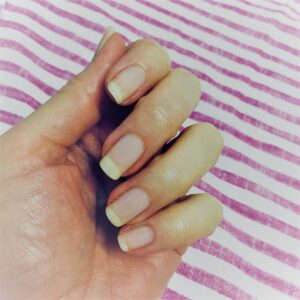Skin health is more than just about how you care for your face, with a big part owed to hair and scalp health. Often what we hide beneath a hat, a beanie, a scrunchie or scarf, doesn’t get the same level of TLC our skin does and is neglected not only when it comes to product choices but time and effort, and understanding.
“The scalp is a more complex structure than the skin to look after”, explains Dr Leona Yip, Consultant Dermatologist and Alopecia Specialist. “This is due to the much heavier density of hair follicles and higher concentration of sebum (skin oils)and makes the scalp more susceptible to conditions such as dandruff, seborrheic dermatitis, folliculitis and hair shedding”.
The scalp has a pH level of 5.5 which is similar to our skin and so maintaining this slightly acidic environment helps to maintain healthy scalp barrier function. With a barrier acting effectively, it can prevent scalp dryness and maintain a balanced scalp microbiome to prevent fungal and bacterial infections. And what is good for scalp health is also good for hair health.
Healthy Scalp, Healthy Hair
“Hair strands are more acidic than the scalp at pH 3.67,” says Leona. “Maintaining this naturally higher acidic environment for hair strands helps to reduce hair friction and frizz, and seals the cuticle to increase hair softness and shine to give the impression of healthy hair”, advising it is best use a shampoo close to pH 5.5 and a hair conditioner with lower pH close to 3.67 every 2-3 days.
However, she admits this may be harder than it sounds as many commercially available scalp and haircare products are alkaline (more than pH 7) or above pH 5.5.
“Some individuals may need daily washing, and some others less frequently. This variation depends on scalp greasiness, sweat production, exposure to pollution, hair cosmetics build-up, and the presence of scalp conditions e.g. dandruff, seborrheic dermatitis and psoriasis”
But, much to Leona’s dismay, many of us wait until hair starts to look visibly greasy before thinking about washing it. This might have to do with our education on not knowing the right way to shampoo and condition – always shampoo only the scalp and hair roots and only condition the ends of hair – but how much grease (sebum) our scalp produces is genetic, just like for our skin.
“Sebum production is important to maintain an intact scalp barrier function to maintain hydration, reduce irritancy and prevent infections but when the scalp is oily and itchy, this may mean there is dandruff or seborrheic dermatitis,” Leona says.
“However when the scalp is dry and itchy, this may be related to the use of alkaline shampoos or conditioners, so switch to a more pH neutral or acidic alternative”, advising that if issues don’t resolve see your GP or dermatologist for further assessment and advice.
Scalp Health and COVID-19
 And if you’ve noticed a change in your hair or scalp health during COVID-19 it may be down to stress. Surprise!
And if you’ve noticed a change in your hair or scalp health during COVID-19 it may be down to stress. Surprise!
“COVID-19 has seen an exponential increase in stress-induced hair shedding, a temporary condition known as telogen effluvium (TE),” explains Leona. “TE is, in fact, very common and can follow a stressful psychological or physical trigger e.g. severe illness, surgery, medication changes etc. however usually resolves spontaneously within 6-9 months”.
Dr Leona Yip MBChB PhD FACD is Consultant Dermatologist, Alopecia Specialist and Medical Director of Skin Partners Specialist Dermatologists, Brisbane.


